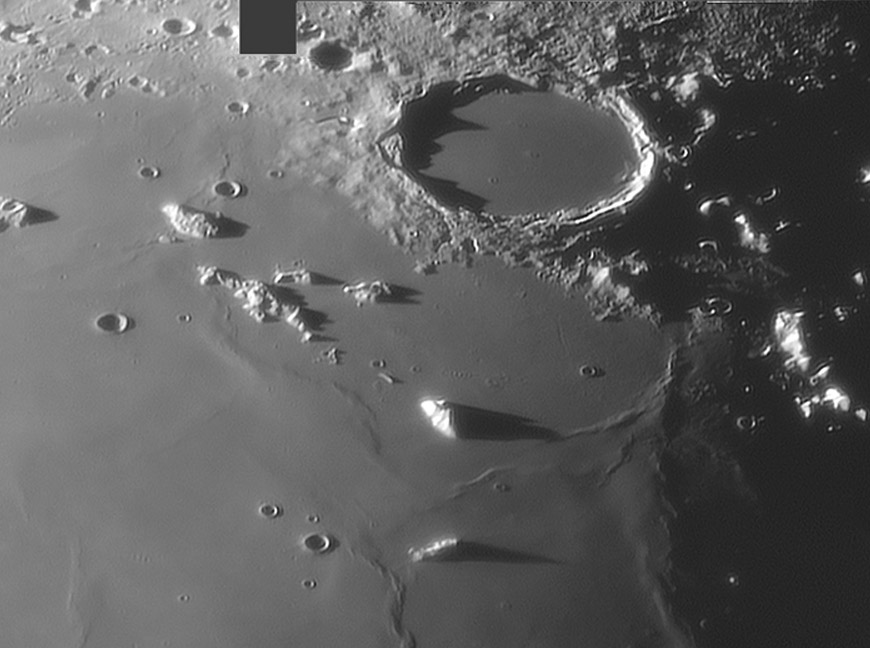Difference between revisions of "July 29, 2018"
(Created page with "__NOTOC__ =Ancient Nothing?= Originally published May 16, 2009 <!-- Start of content --> <!-- ws:start:WikiTextHeadingRule:2:<h1> --> <!-- ws:start:WikiTextLocalIma...") |
|||
| Line 16: | Line 16: | ||
<br /> | <br /> | ||
<strong>Related Links</strong><br /> | <strong>Related Links</strong><br /> | ||
| − | Rükl plates [ | + | Rükl plates [https://the-moon.us/wiki/Rukl11 11] & [https://the-moon.us/wiki/Rukl12 12].<br /> |
<br /> | <br /> | ||
<p><b>Yesterday's LPOD:</b> [[July 28, 2018|Uncommon Perspective]] </p> | <p><b>Yesterday's LPOD:</b> [[July 28, 2018|Uncommon Perspective]] </p> | ||
Latest revision as of 18:22, 18 August 2018
Ancient Nothing?
Originally published May 16, 2009

image by Oscar Canales Moreno, Pinsoro, Spain
It was Schröter who first called the partially ringed feature just south of Plato Newton. That name was never officially accepted and the real Newton is an odd, difficult to see crater half a Moon away near the South Pole. Schröter's Newton has become informally known as Ancient Newton (AN). AN is commonly considered a ghost crater, a normal impact crater that has been nearly completely buried by mare lava and is hinted at only by a mare ridge arc or circle. A classic ghost crater is Lambert R, and a line of additional ones stretches across Mare Nubium, east of Bullialdus. I wonder if AN really is a ghost crater, or any crater at all. There are four components of the ersatz crater. First is a broad mare ridge that comes north from Piazzi Smith and joins with a branch from the main Imbrium inner ring mare ridge (the branch passes between Pico and Pico Beta); this broad ridge overlaps component two, the narrower curved mare arc of the AN rim. The third component is made up of Pico and blocks of the Teneriffe Mountains. The fourth component is the rugged arc of land that juts into Imbrium just southeast of Plato. The mountain blocks are much larger and higher than the narrow ridge hint of a rim. The AN rim would have to have been much more irregular in elevation than is nearby Plato if these mountains are part of it. And if they are high parts of the AN rim, what is the origin of the other Teneriffe peaks that aren't on the trace of the rim? I used to accept AN as a ghost crater, now I am not so sure. How do you interpreted the evidence?
Chuck Wood
(Notice that the area just east of the eastern rim of AN is a swell and has a rimless collapse pit.)
Technical Details
24 Aug 2008; 03:45 UT. Newton Skywatcher 250mmEQ6 f: 23,5 + Videocamera Mintron 13v6-EX- + Canon MV500i + Red Filter W25 + Powermate 5x. VirtualDub and Avisynth for deinterlace and video capture, Registax5 + Avistack 1.74 + Photoshop + Focus Magic. This is an excerpt of a 6 images mosaic 300/1500 images captured at 50 img/sec.
Related Links
Rükl plates 11 & 12.
Yesterday's LPOD: Uncommon Perspective
Tomorrow's LPOD: A Bend Without (Known) Reason
COMMENTS?
Register, Log in, and join in the comments.



